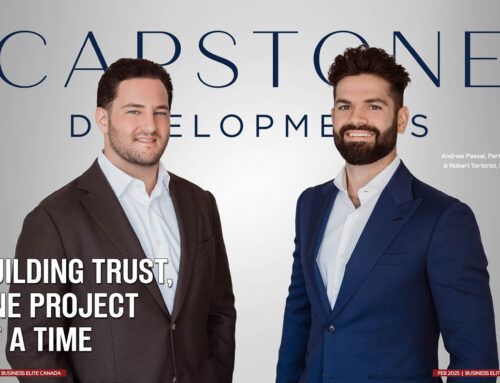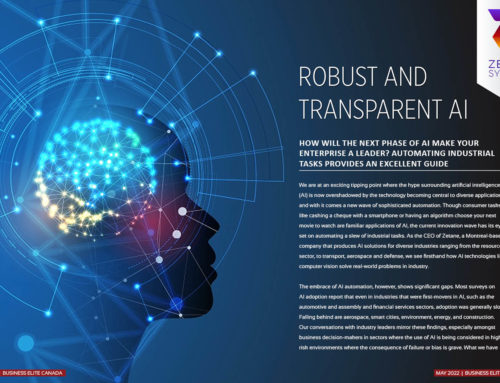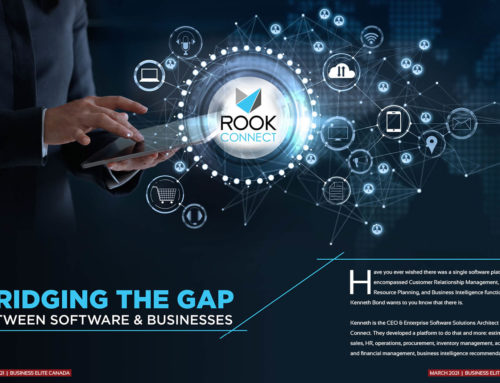The Brains of The (Transportation)Operation
Willowglen Systems is an Albertan company whose technology is deployed across five continents and, after fifty years of operation, is still making waves in the industrial automation industry! In 1971, when Willowglen Systems was founded in Edmonton, AB, the cutting-edge technology it developed included the first electronic teletype. Today, Willowglen builds software and hardware for the industrial automation sector solving challenges in distributed mission-critical infrastructure for metro rail, heavy rail, pipelines, and power grids.
Wayne Karpoff, President, likens their products to the brain and nervous system of an operation. The brain sends signals to the nerves and muscles which, in turn, send data back to the brain for analysis and decision making. “In your home, you probably have WIFI, so it’s easy to add a ‘smart’ doorbell to your system,” Karpoff says. “In an industrial context, it’s harder to do that because of system security and operational requirements. Willowglen bridges those gaps. Our clients’ products and services are typically mission critical – when something goes wrong, very bad things can happen.” Building an infrastructure that must function correctly every time is a highly complex undertaking.
Understandably, quality control is of the utmost importance. Willowglen often builds to the same safety standards as companies that produce nuclear reactors. You may not know the Willowglen brand, but you might be reading while riding a transit system their products support.
Karpoff, says, “We tend to focus on key areas: metro rail systems (e.g. Vancouver’s Skytrain), pipeline network flow management (e.g. Singapore’s gas energy supplier, Taiwan’s water distribution network), heavy rail systems and electrical power (e.g. in all provinces in China). With headquarters in Edmonton and an office in Calgary, Willowglen’s solutions are an excellent example of a Canadian tech company with a global impact.
At the moment, the University of Alberta is home to the most prolific engineering college in Canada. And the Northern Alberta Institute of Technology (NAIT) – also Edmonton-based – is the largest polytechnic in the country. Those institutions graduate world-class students who are scooped up by employers around the world. As a result, companies from Google to auto manufacturers are opening facilities in Edmonton, in order to be close to those centres of excellence. The technology boom underway in Alberta will enable the province to become more environmentally savvy and less reliant on the energy sector.
Karpoff stresses that the Willowglen team thrives on their innovative and meaningful work, and they are proud of everything they do. “We take on high-end complex challenges and are out to change the world.” A practical example of this is how the design of metro rail systems around the globe have evolved. Originally individual systems would operate separately and not talk to each other, which was incredibly inefficient – Willowglen provides the software that integrates previously isolated systems. Having one central brain that controls everything creates many efficiencies, significantly increases safety, and ultimately results in a better rider experience. In addition, as new technologies emerge, they can be better deployed on a single system than the original multiple systems. So, there are immediate benefits and an impact that extends for decades into the future. “It’s pretty hard not to be proud of that.”
The greatest challenge for any technology company is inertia. No matter how revolutionary your product when it’s launched, human nature is to say ‘we’ve always done it like this’. Willowglen competes with technologies from all over the world, so it’s incumbent upon their teams to innovate continuously, in order to remain competitive. Canadian companies often look at the billion-dollar competitors in their industries and decide that they can’t compete. But most innovation comes from smaller and more nimble organizations that can react to market forces, adapt and launch new products much more quickly than the giants can.
The pandemic has changed the way Willowglen connects with its customers. With few opportunities to travel, and business on five continents, getting quality time with customers, partners and other suppliers has been challenging. Nonetheless, the company’s growth has seen an increase in its staff complement of more than 40% in the last year. Good communication is more important than ever – with staff as well as customers. Karpoff would rather err on the side of over-communicating and continues to search for new ways to connect.
Openness and transparency are critical when communication is challenging. He hosts company-wide Zoom meetings on a regular basis. The executive team meets at 8AM every day to talk through issues and ensure they keep in touch. That example has trickled down through the organization, and it’s changing the way culture is built. For example, new employees record a quick video introduction, so they aren’t viewed as an email address or just another square on the Brady Bunch screen arrangement. The company’s social committee continues to design weird and wonderful virtual experiences to ensure team members maintain connection.
Willowglen’s future focus is to continue to deliver new technologies that will improve a commuter’s experience, change the risk profile for heavy rail, and so on. It’s just one example of a Canadian company unknown by most of the population that’s competing successfully on the world stage.






